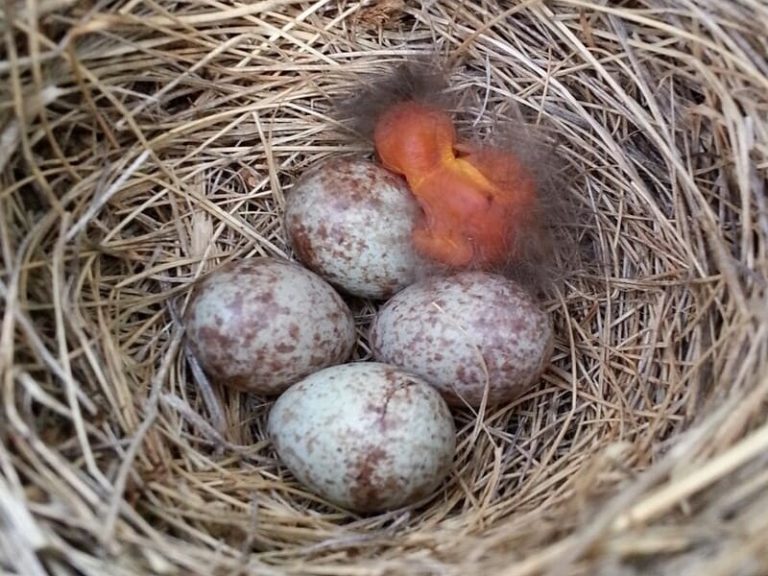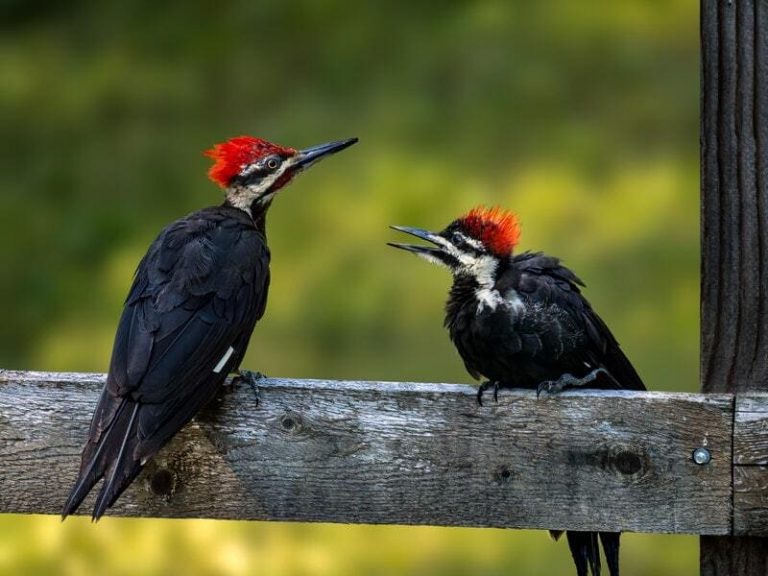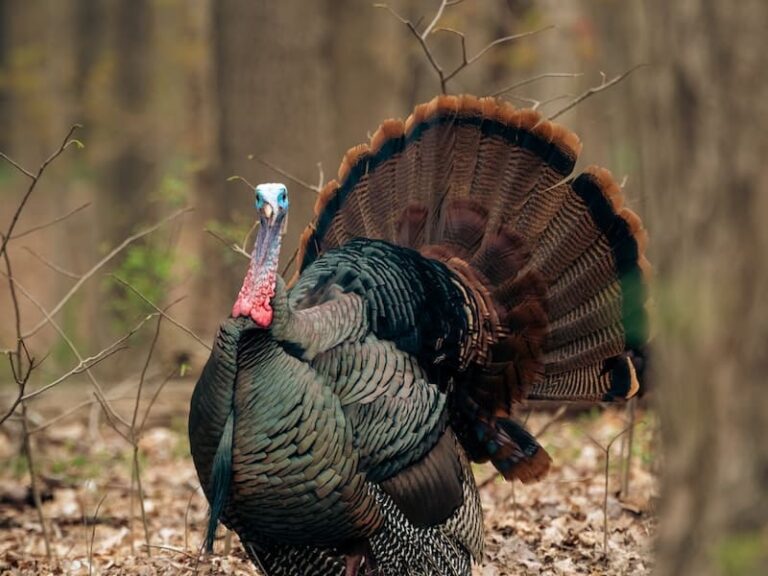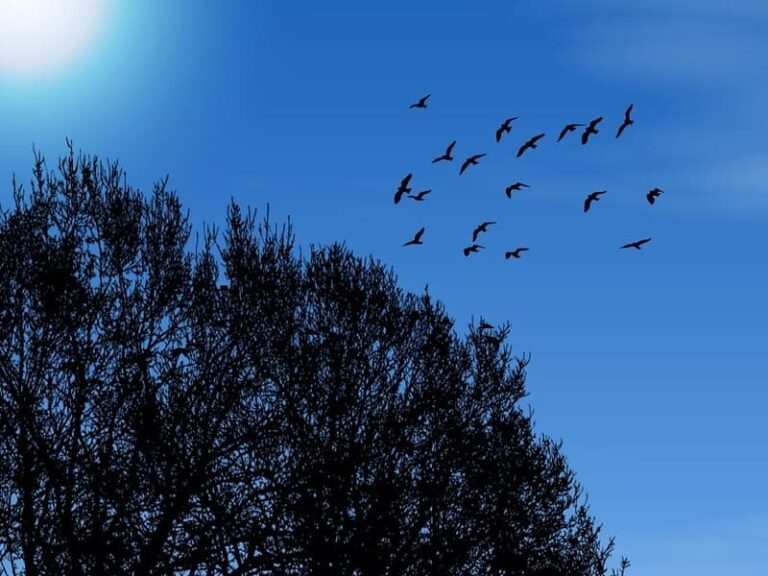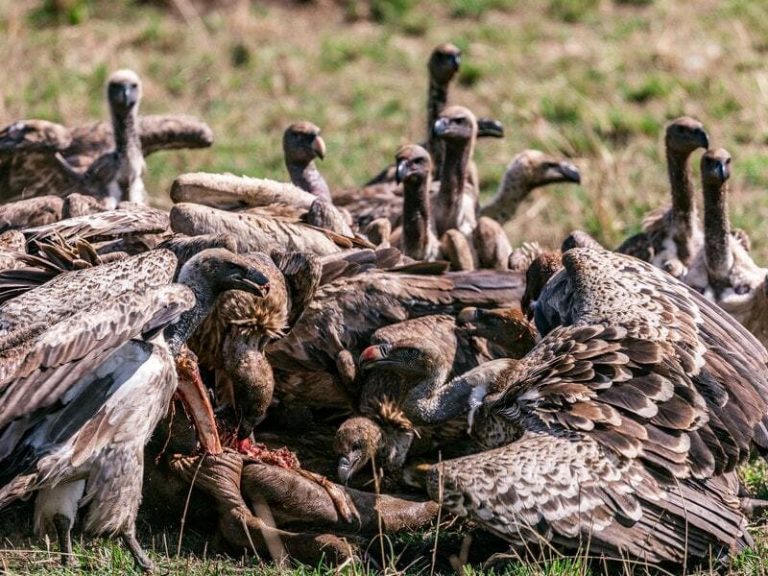15 Birds that lay blue eggs
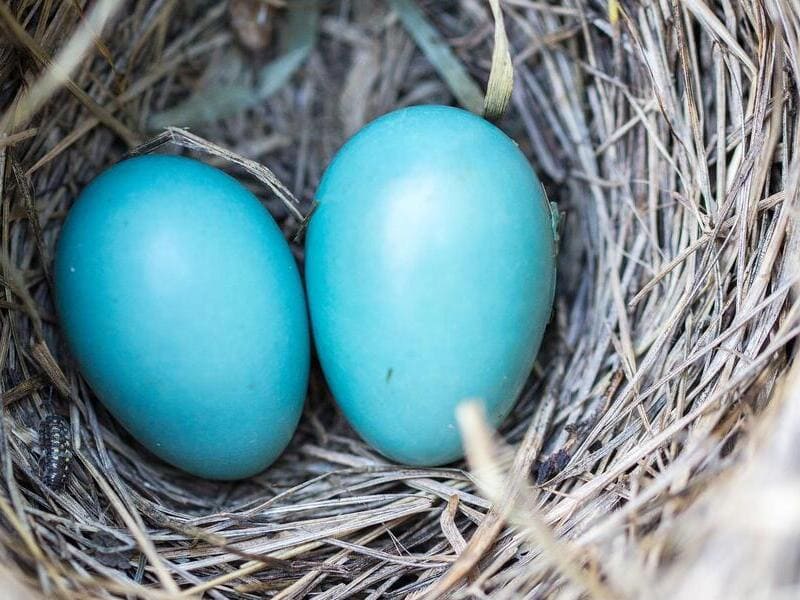
Birds come in a rainbow of colors, from the cardinal’s bright red to the dove’s powder blue. But have you ever seen a bird with blue eggs? While they are not as common as brown or white eggs, there are a few species of birds that lay blue eggs. If you’re lucky enough to spot one of these blu-eggers, here’s what you need to know about them!
Many vertebrates lay eggs to reproduce. But, birds are the only vertebrates attributed to colorful eggs. The bird eggs can be pink, blue, green, brown, or olive, and the default white color. Among all the colors of the bird eggs, blue is the most mesmerizing. This article will examine some of the birds that lay blue eggs and why they do that?
Why Do Birds Lay Blue Eggs?
To unravel the mystery behind blue eggs, one needs to peek at the process of laying eggs. A blue pigment present in the oviducts of female birds determines the color of the eggs they lay.
When an egg passes through these ducts, the pigment coats it and gives it a blue color. The smaller eggs have denser colors than bigger eggs due to the same quantity of pigment used for coloring, irrespective of the size of the egg.
You can rub off the blue color if the egg has been laid recently. But, the color becomes permanent as time passes. The blue color provides camouflage to the eggs in hostile environments, protection against U.V. rays, and identification for the parent birds.
15 Birds That Lay Blue Eggs
One of the most eye-catching colors in nature is blue. While blue flowers and skies are relatively common, blue eggs are much rarer. Blue eggs are found in various birds, from tiny finches to giant ostriches. The appearance of the eggs varies depending on the species. Still, they all share one thing in common: a beautiful, rich blue color.
Blue eggs are often sprinkled with other colors, creating a truly stunning effect. For bird enthusiasts, spotting a bird with blue eggs is a real treat. So keep your eyes peeled the next time you’re out on a hike or taking a stroll through the park – you never know what you might find.
1. Blue Jay
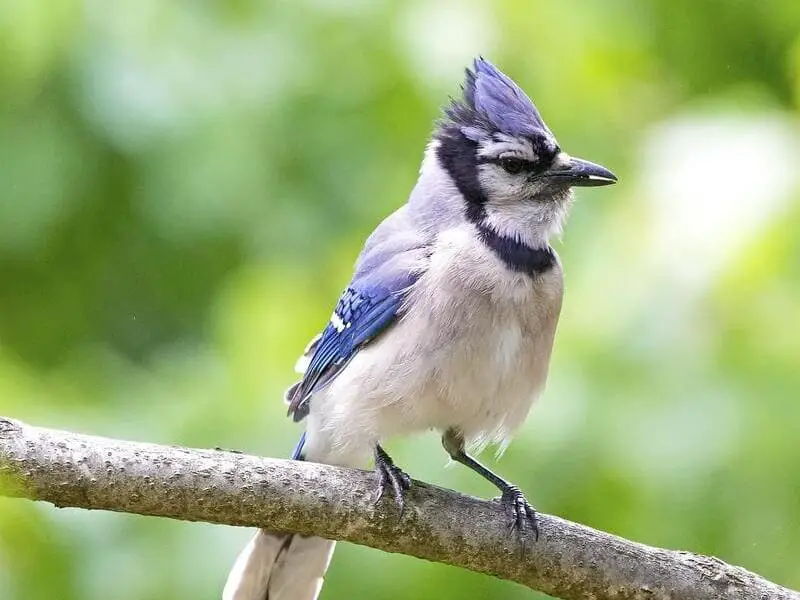
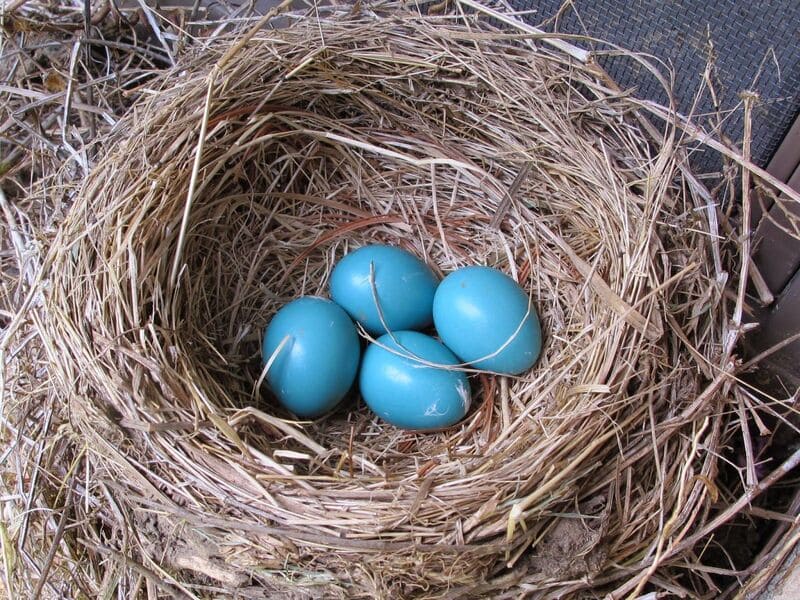
The first one on the list of birds that lay blue eggs is Blue Jay. Blue jays dwell in the forests throughout Canada and USA. They are considered very noisy, extremely intelligent, and highly adaptable. Their call sounds like ‘JAY!’; hence they are named Blue Jay. They have colorful bodies with dark rings around their eyes.
The female bird lays two to seven eggs every season. The eggs have brown spots in the blue background.
2. American Robin
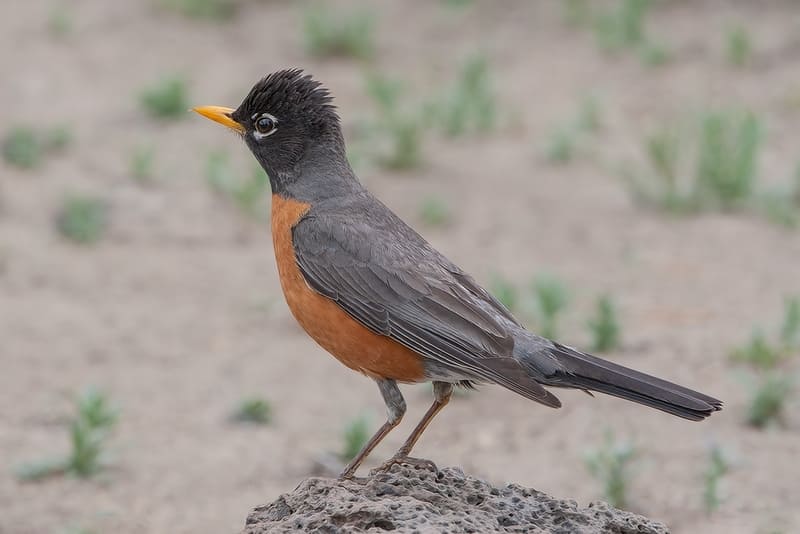
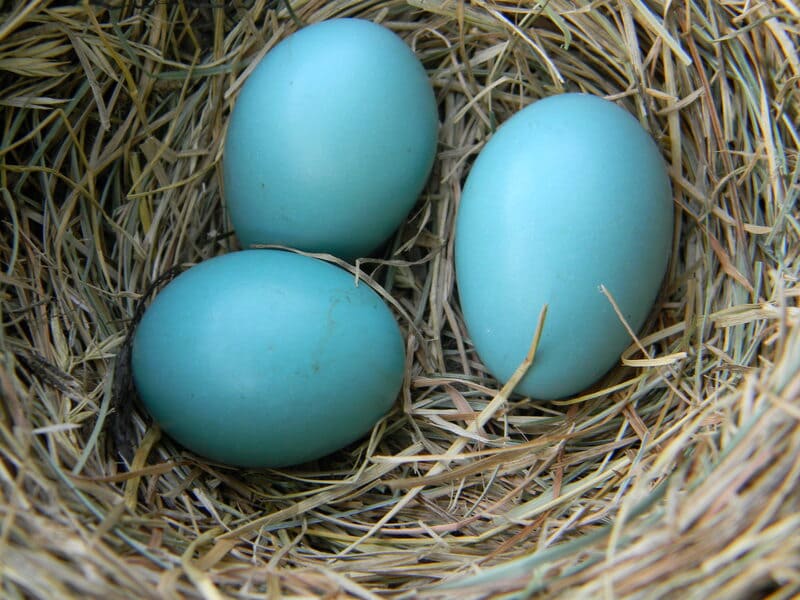
Without the American Robin, no list of birds that lay blue eggs is complete. It is common in North America and considered to have the most beautiful call. They built round nests in trees during the early winter. The female American Robin lays three to five blue eggs. The eggs are spotless blue and seem like an optical illusion to protect against predators.
3. Blackbird
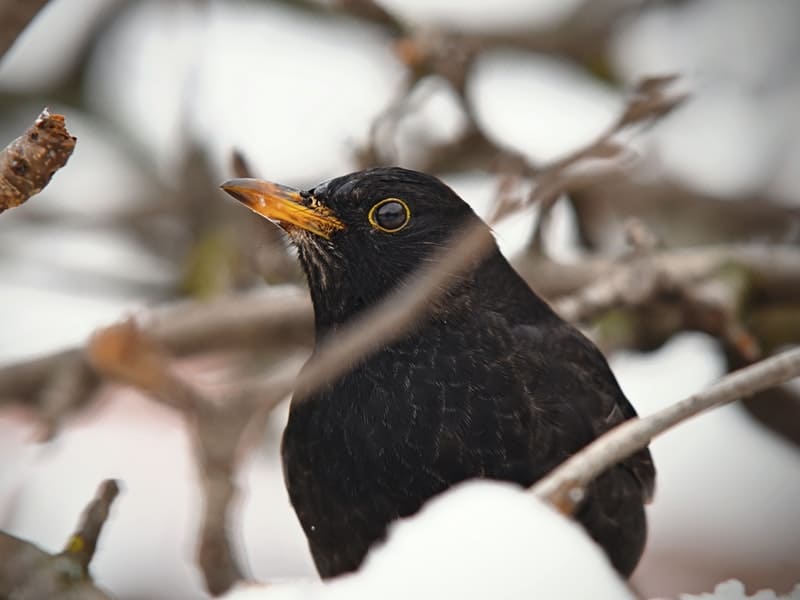
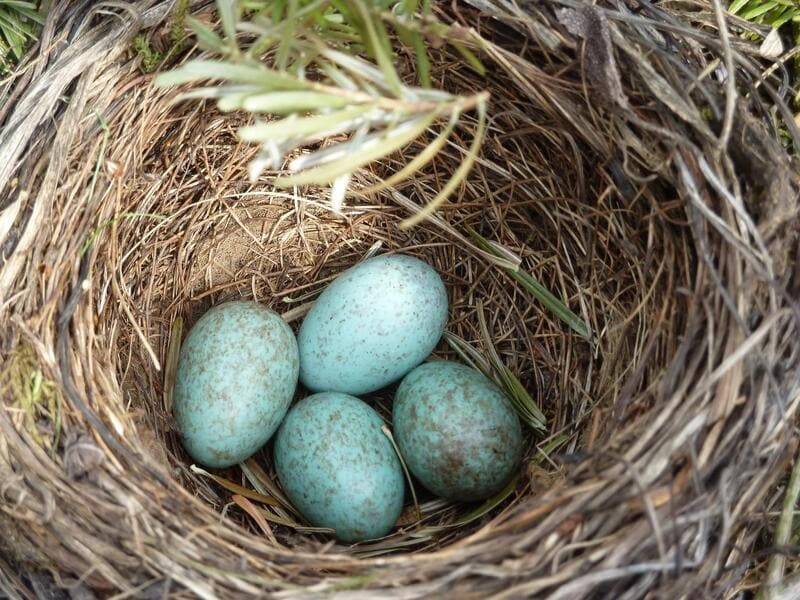
The blackbirds are found in Asia, Europe, and North America. It is a medium-sized bird with a strong beak for pulling insects from the soil. The color of the beak is yellow with a reddish spot at the top in males.
The female lays three to five blue eggs with red speckles on them. The egg-laying season is in March and July.
4. Song Thrush
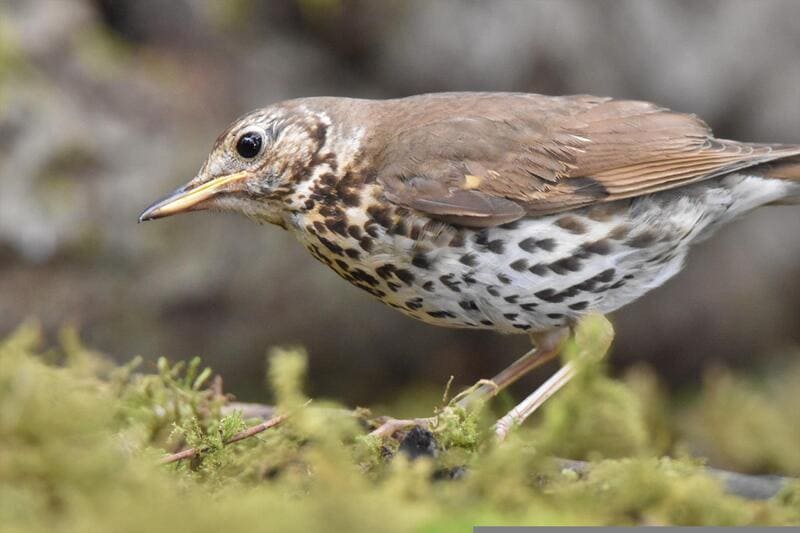
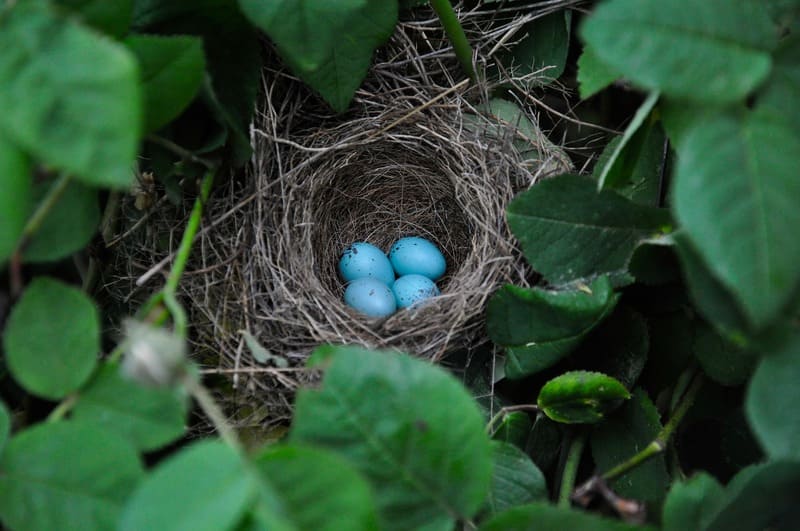
The song thrush can be found in Asia, Africa, Europe, and North America. It is a small brown, greyish-colored bird. The female bird has a light brown breast while a male has more of an orange shade; both have black spots.
Repetitive calls of the bird feel like a distinctive song, hence the name, Song Thrush. The female song thrush lays three to five light blue eggs every season. The incubation period of the eggs is 14 to 15 days.
5. Dunnock
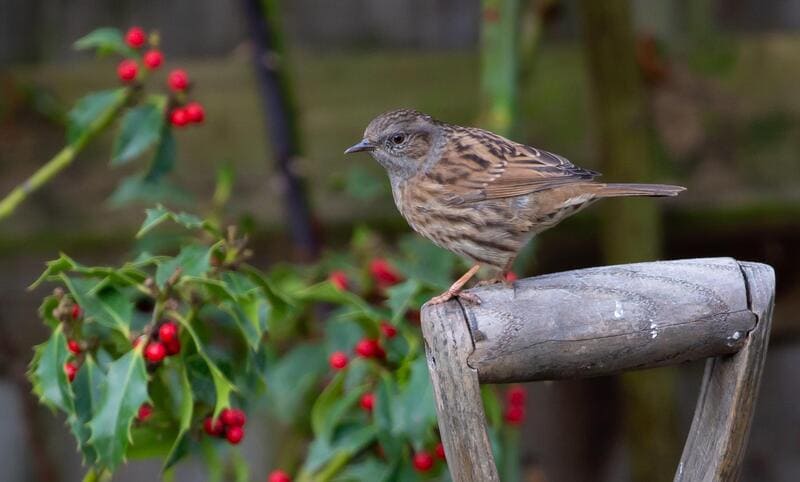
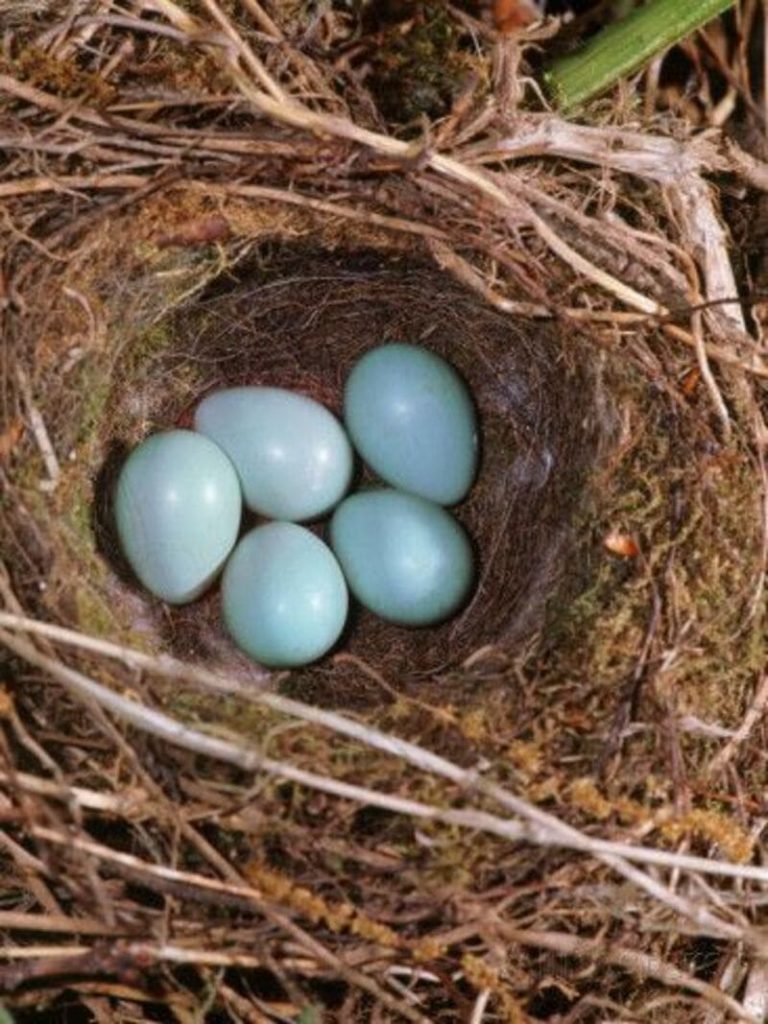
Dunnock is a garden bird that often gets confused with a house sparrow due to similar features. It prefers dense vegetation for habitation. The female Dunnock creates a nest with leaves, roots, and grasses and lines it with other nesting materials to keep it soft.
It lays glossy blue eggs with red spots. The eggs are in four to five batches that hatch in two weeks.
Sometimes the nest of a Dunnock is taken over by a Cuckoo that lays eggs in it. A Dunnock feeds Cuckoo chicks even though they don’t look like her own chicks.
6. Starling

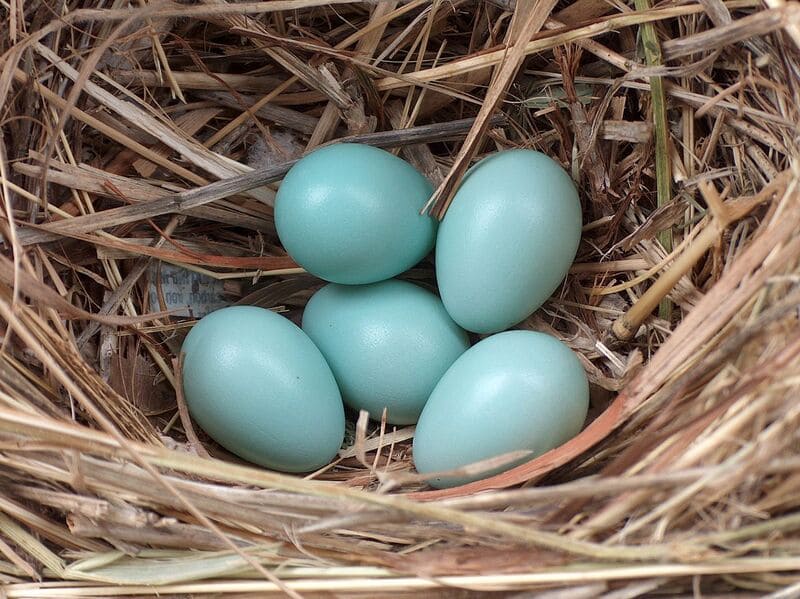
Next one on the list of birds that lay blue eggs is starling. Starlings are natives of Asia, Europe, and North America. Starlings are known for their beautiful call and aerial dances.
They look dark from afar, but they have sparkling colors of features with beautiful patterns. A female Starling lays as many as nine eggs per season. The eggs are pale blue with light brown spots. The size of the egg is 21mm wide and 30mm long.
7. Magpie
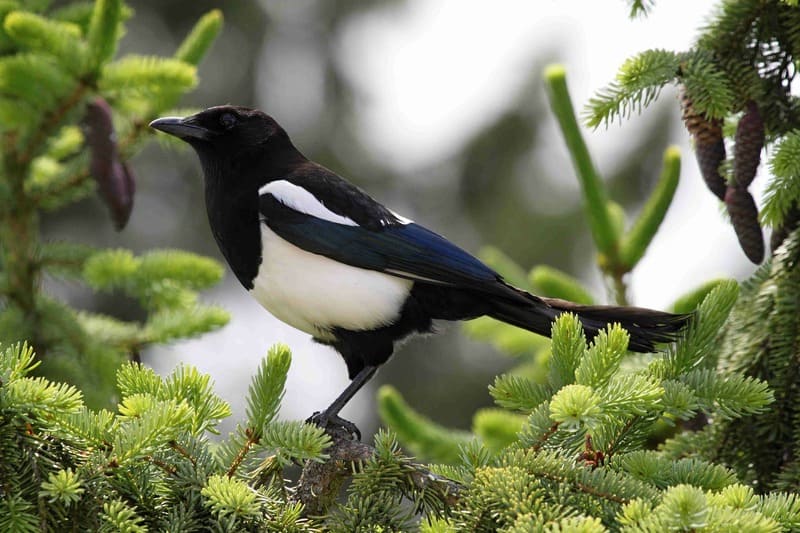
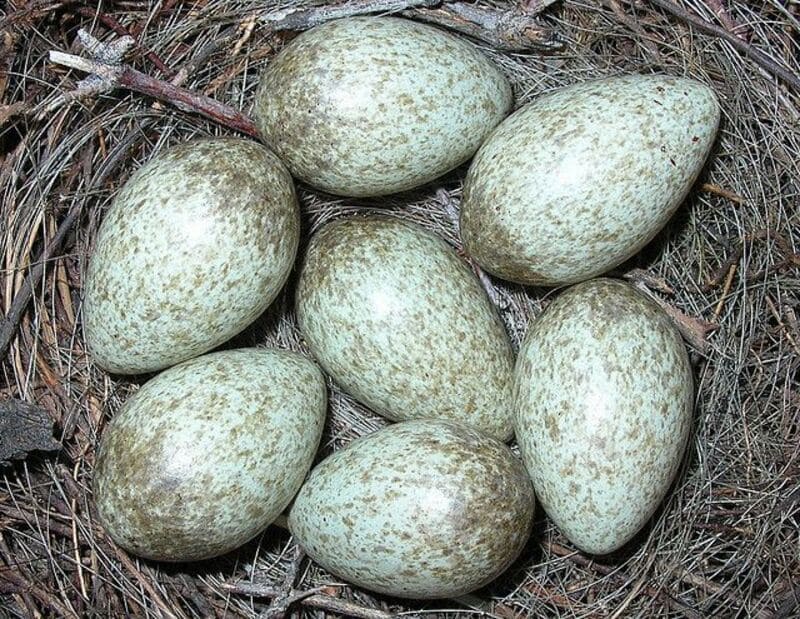
Magpies are black and white with some color variations in male and female birds. They have a higher tail-to-body ratio. Magpies are considered one of the most intelligent birds in the world. They are most common in the U.K.
The female magpie lays up to seven eggs per season. The Magpies’ eggs look almost identical to blackbirds with greenish-blue eggs with red speckles. However, their size is a little bigger than the blackbird eggs.
8. House Finch

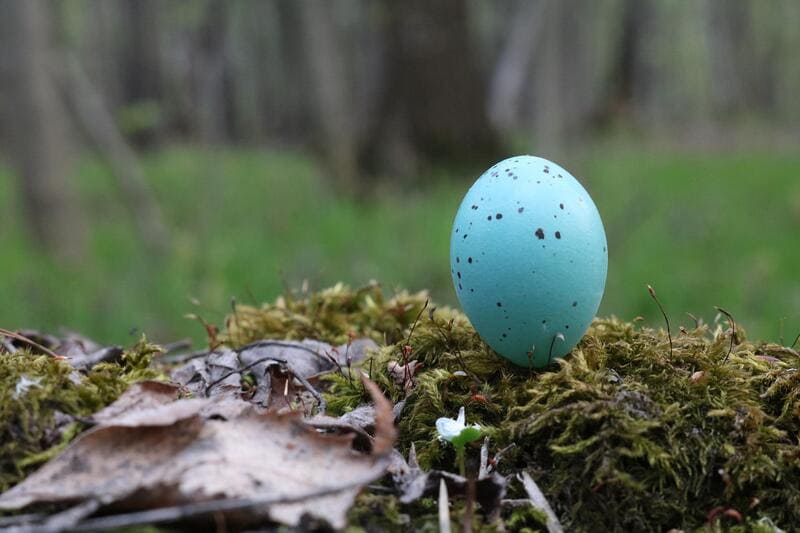
The House finch is the most popular western bird. It is a medium-sized bird with red color on its head. The diet of house finch consists of fruit and thistle seeds. It makes nests in cavities, trees, growing vines, and sometimes nest boxes.
The female lays four to five blueish green eggs with scattered black marks at the egg’s larger end. The eggs have an incubation period of twelve to fourteen days.
9. Gray Catbird
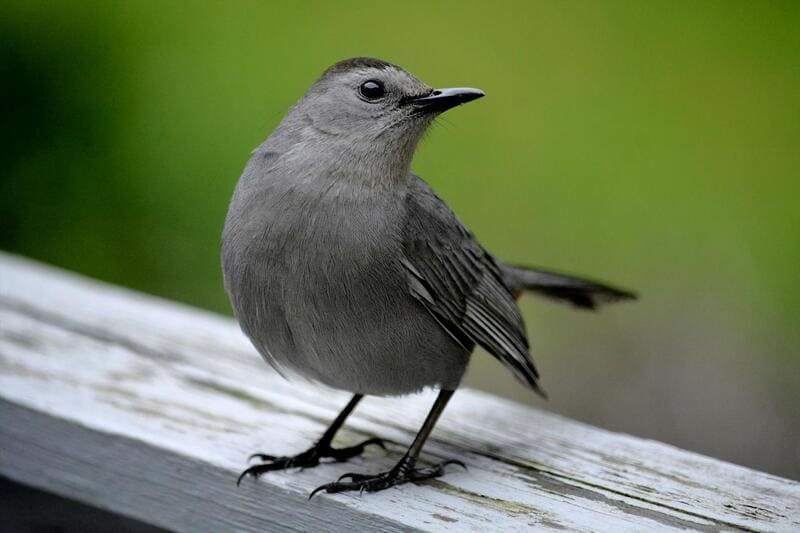

Gray Catbirds are found throughout North America and migrate to Central America and Mexico in winter. They appear entirely gray with a black cap and blackish tail.
Gray Catbird can make hundred distinctive calls and sign up for ten minutes straight.
The female gray catbird lays a clutch of one to six greenish-blue eggs in color. Sometimes the eggs have red spots on them. The eggs take twelve to fifteen days of the incubation period.
10. Snowy Egret
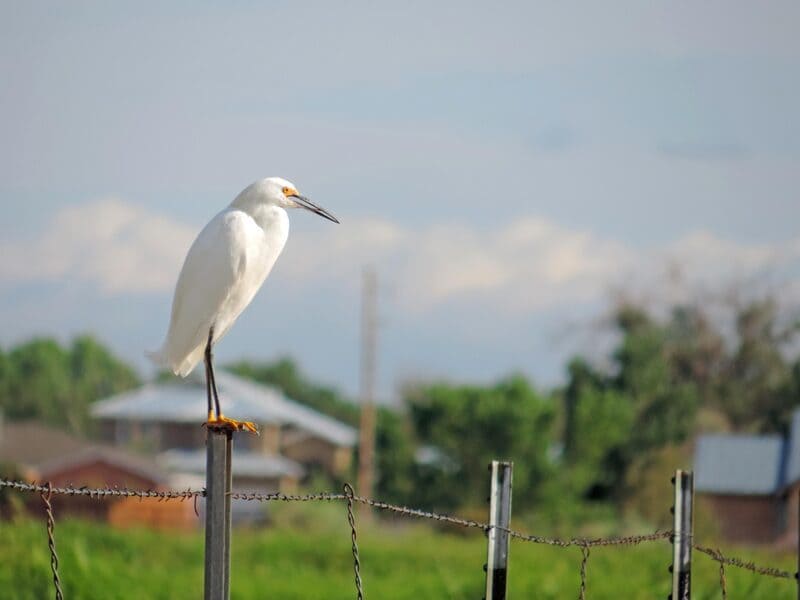
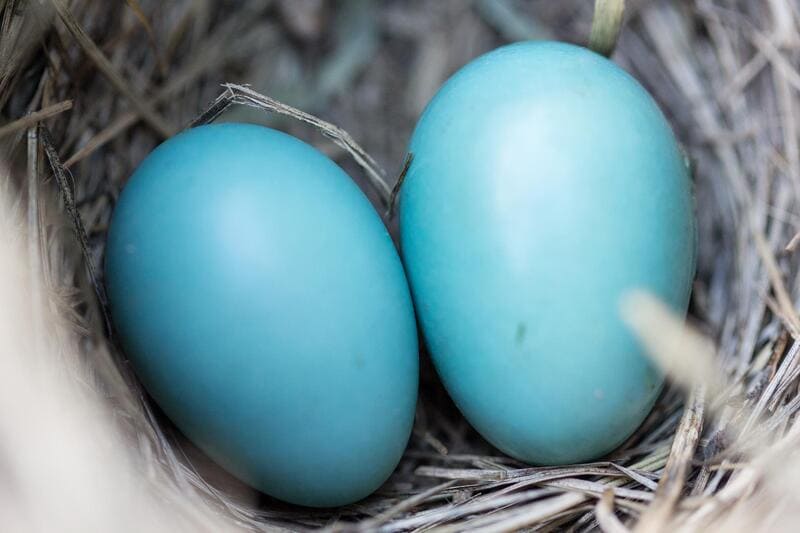
The snowy egrets are entirely white with black bills and yellow lore. The legs of a mature snowy egret are black with yellow feet. While in juvenile, the color of the legs and feet is greenish-yellow.
The male starts building a nest before finding a suitable mate. However, females do most of the nest building with supplies brought in by the male. The female snowy egret lays eggs that are pale greenish-blue. The clutch size ranges from 2 to 6, with an incubation period of 24 to 25 days.
11. Eastern Bluebird
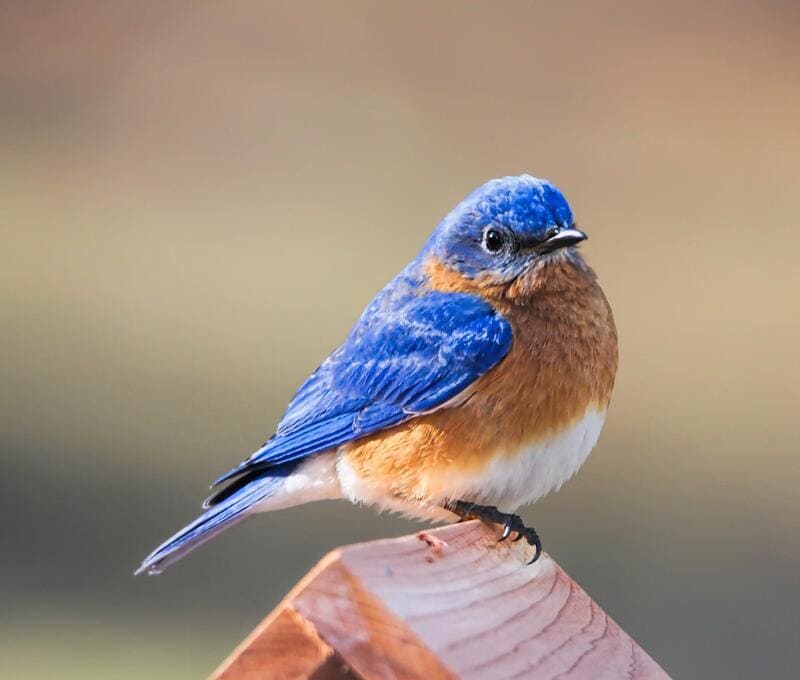
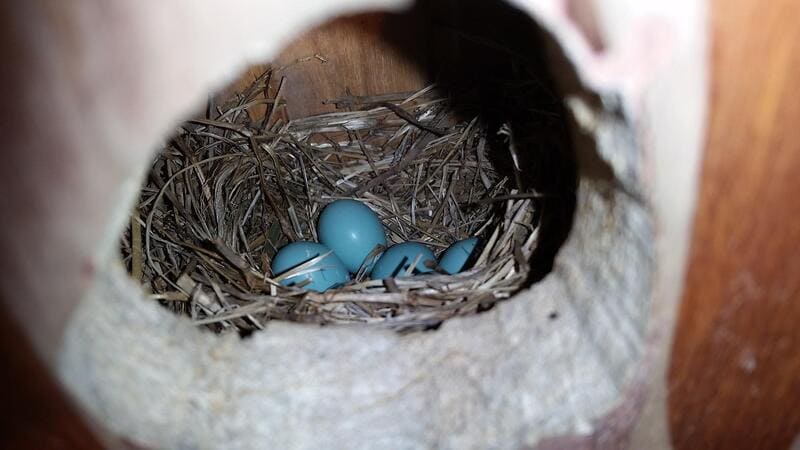
The eastern bluebird is a small bird found widely in North America. It is named eastern because they breed in the east of North America. It is one of the hole-nesting birds that lay blue eggs and makes nests in trees, nest boxes, or anywhere it finds a suitable notch.
Nests of Eastern bluebirds are found in stumps, oak trees, and artificial nests placed by people hosting the birds. The female eastern bluebird lays two to six blue eggs with brown spots. The eggs are similar to many species of thrush.
12. Lesser Goldfinch
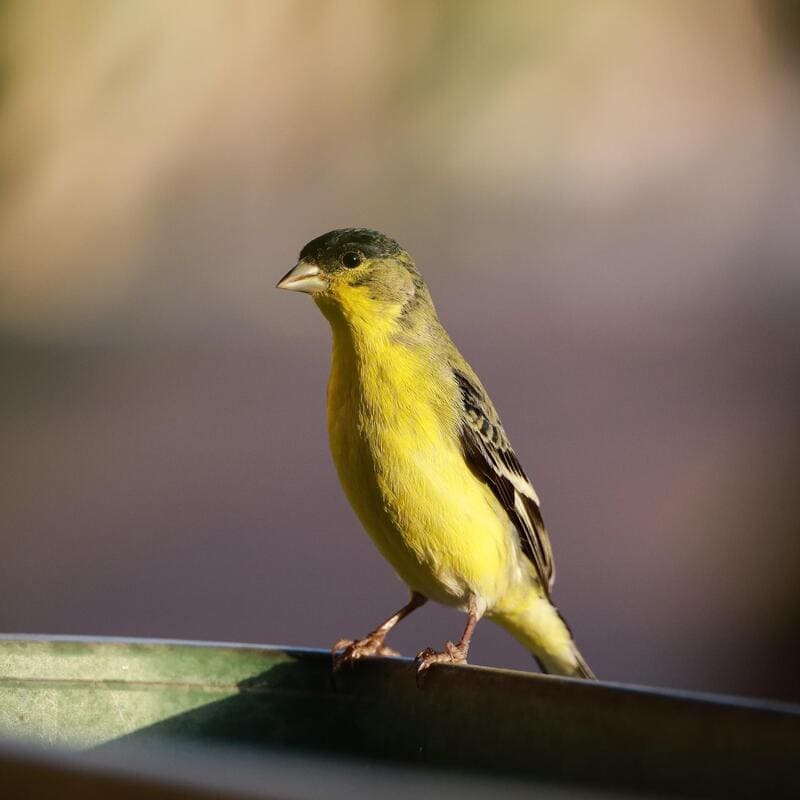
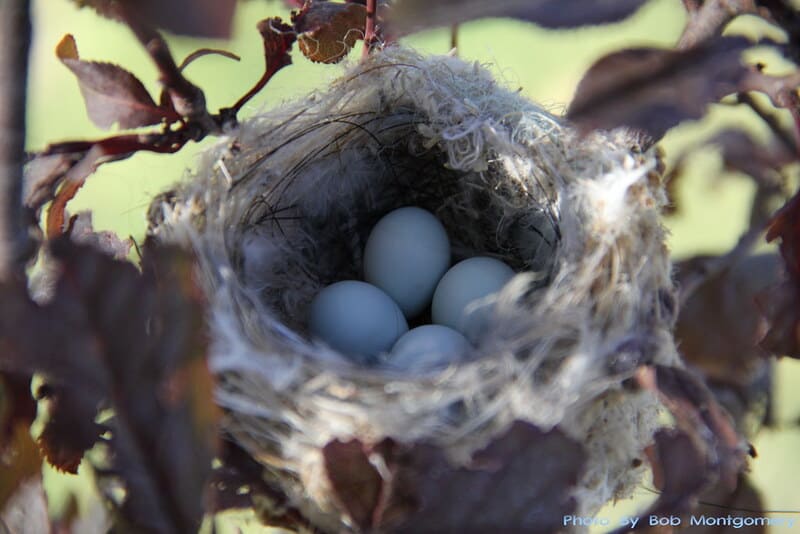
The lesser goldfinch is a native of the western U.S. and South America. It is a quick little bird, constantly moving around. The lesser goldfinches gather in a flock around watering and feeding sights.
The female selects the nesting site and builds a nest in four to eight days. It lays three to six eggs that are unmarked pale blue-white. The incubation period lasts 12-13 days.
13. Red-winged Blackbird
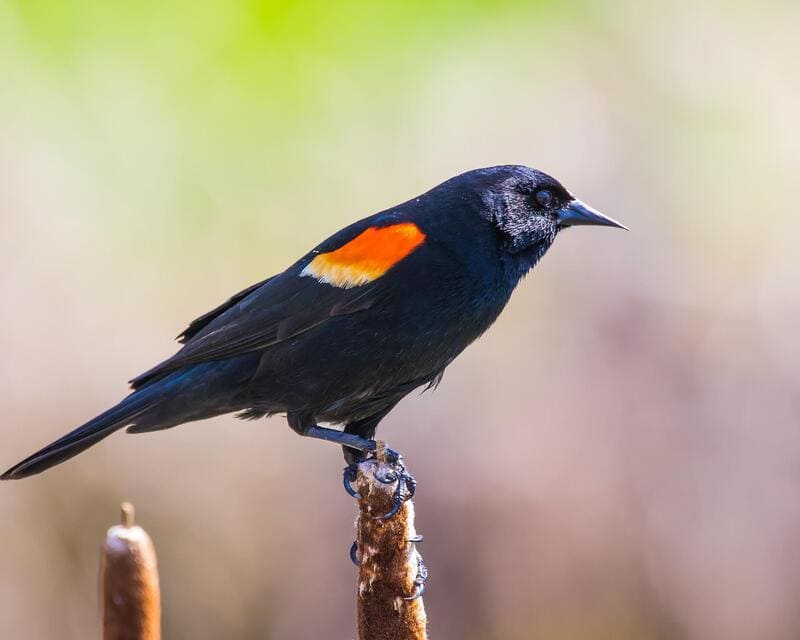
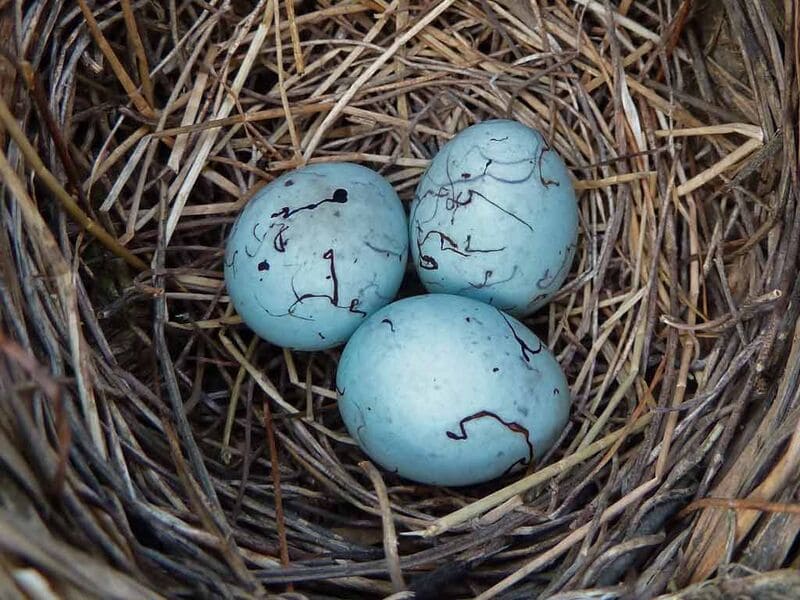
The red-winged blackbird is found in abundance across North America. Male birds are glossy black with yellow and scarlet shoulder patches, while females are streaky brown. Their songs are the indicators of the return of spring.
The female chose and built the nest near the ground or water surface in a marsh. The clutch of eggs consists of two to four pale blue-green with black or brown markings. The incubation period is eleven to thirteen days.
Are There Any Birds That Lay Blue Eggs On The Ground?
When it comes to laying blue eggs on the ground, the only bird that qualifies from the list is the double-crested cormorant. It can lay eggs on barren land, rocks, or reefs with no vegetation to cover.
What Should I Do When I Find Blue Eggs?
If you find the blue eggs of some bird, the best option is to stay away. It is not recommended to disturb the eggs in their natural setting.
Final Words
There are many more birds that lay blue eggs, but the list presented here covers only the most common and popular ones. All these birds are found in North America and have different nesting habits.
The eggs of all these birds are either sky blue or pale blue-green with some markings. The incubation period for all these eggs is between eleven to fifteen days. If you find any blue eggs while on a walk, the best thing to do is leave them undisturbed.
Interesting articles:

